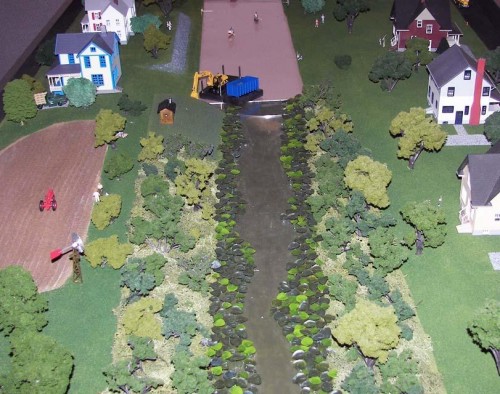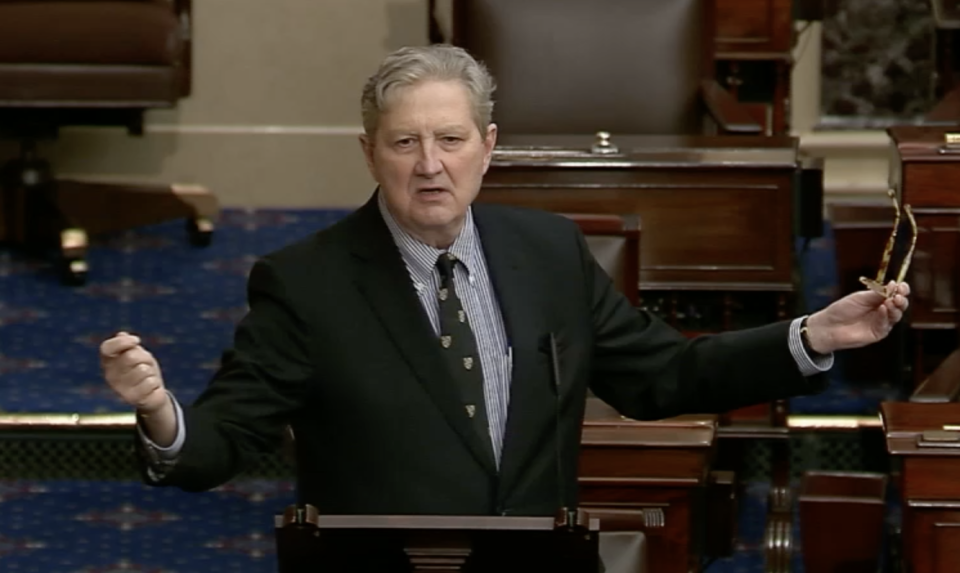
Carroll P. Matherne
November 25, 2008
RoseMary Smith Giron
November 28, 2008Bayou Lafourche’s dredging process to improve the flow and quality of drinking water drawn from it could start April 2009, officials said Friday.
Louisiana’s Coastal Protection and Restoration Authority and the Bayou Lafourche Freshwater District announced a timeline for work as they formalized their collaboration on the long-awaited project to increase the flow of the waterway.
The state will give $20 million and technical assistance to clear debris and dredge along the upper 6.2-mile stretch of Bayou Lafourche from Donaldsonville to Belle Rose. Officials say the project will improve the drinking water quality for more than 300,000 people.
“This is the exact sort of project that we need to be doing in coastal Louisiana,” Garret Graves, Gov. Bobby Jindal’s coastal aide, said at Thibodaux’s Wetlands Acadian Cultural Center. “There is a huge nexus here. We are bringing together drinking water issue and we are bring together coastal wetlands issues.”
“This isn’t for studies, this isn’t for reviews. This is to turn dirt, to begin building this project to begin restoring our coast,” he added.
Government officials on hand for the announcement included parish presidents Charlotte Randolph of Lafourche, Michel Claudet of Terrebonne, as well as Mayor Richard Champagne of Lockport, state Sen. Reggie Dupre, D-Bourg, and state Rep. Dee Richard.
Locals pushed for a similar project in the early 1990s in an attempt to introduce more freshwater into Bayou Lafourche to combat saltwater intrusion and revitalize the ecosystem. However, the project failed.
It was not until after Hurricane Gustav spoiled the waterway with rotting tree limbs, putrefied fish and other debris, which turned the community’s drinking water brown and smelly, that the project gained steam.
This marks the first time state and local officials have collaborated on a comprehensive project to restore coastal Louisiana.
Officials were called upon to sign as witnesses to the cooperative-endeavor agreement.
“My eagerness and excitement is just emblematic to the way I feel about Bayou Lafourche,” said Hugh Caffery, chairman of the freshwater district. “Today, we take a stand and I look forward to working together as a team to make this happen.”
After the announcement, Robert Routon, project manager, gave a tentative schedule for the work.
Surveying crews will begin work in early December, he said. Bidding bids on land-clearing work should be advertised by the beginning of February. He estimates dredging work could begin in mid-April.
Caffery said the public will see improvements to the bayou’s flow by late 2009.
“It’s will be as though we have two bayous running here instead of one. We expect that type of flow,” he said.
Officials said they expected the timeline would be followed.
“This monumental for the parish,” Randolph said after the signing. The affects of the storms actually moved this project up a few years. This is a tremendous day for Lafourche. We are taking the firm stance and we are saying we are doing to do it.”
Although Terrebonne Parish will not directly gain from the dredging because most of the water flows to Laforuche, Claudet said the dredging will help the parish because majority of its freshwater comes from the waterway.
Graves also announced that the governor’s office would grant the district’s request for right-of-way acquisitions for the project, meaning it will have the state’s authority to take control of land needed to complete dredging.
Landowners along Bayou Lafourche have expressed concerns about the flooding potential the increased flow may pose. Officials have continued to assert the rising water levels would not impact any homes. They agreed some coastal properties could be buffered to protect property. However, it would require removing of waterside sheds and bulkheads.
A prototype of the Bayou Lafourche dredging project illustrates how the waterway will be increased to allow for an increased waterflow. * Photo by SOPHIA RUFFIN











